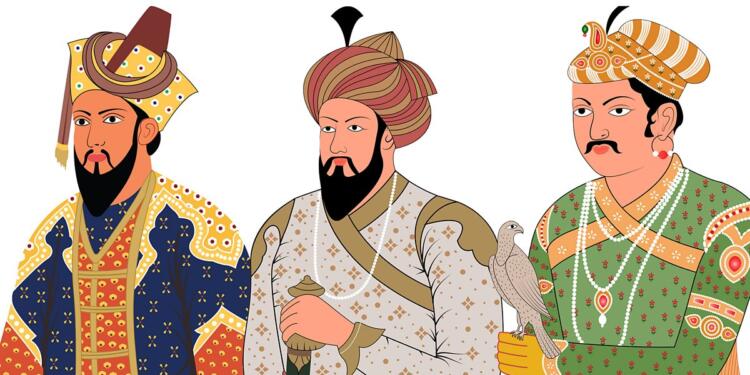In the annals of Indian history, few figures evoke as much controversy and division as Aurangzeb, the sixth Mughal emperor. While some view him as a devout ruler and a formidable administrator, others see him as a symbol of tyranny and religious intolerance. In recent times, there has been a disturbing trend of attempts to glorify Aurangzeb, portraying him as a hero and defending his actions. However, history tells a different story, one that underscores the dangers of idolizing a ruler whose legacy is stained with bloodshed and oppression.
Aurangzeb’s Reign: Unyielding Religious Zealotry
Aurangzeb, like his predecessors, was determined to reinforce and expand the might of the Mughal Empire across Hindustan. His principal obsession was to live his life true to the guiding principles of Sharia. But his personal adherence to Sharia wasn’t enough. Aurangzeb sought to enforce Sharia on every Muslim in Hindustan and penalize non-Muslims unless they embraced Islam. Thus began the era of religious persecution that ended only with his death.
The Firman of 1659
In 1659, Aurangzeb issued a firman stating that while existing temples would not be demolished, no new ones would be allowed. This order was a direct enforcement of Islamic law. While old temples wouldn’t be destroyed, repairing them was forbidden.
Early Signs of Fanaticism
Aurangzeb’s religious zealotry was evident from his youth. At 17, he demolished the great temple built by Bir Singh in Orchha on Shahjahan’s orders and constructed a mosque on the site. A decade later, as the governor of Gujarat, Aurangzeb destroyed many temples in Ahmedabad and other areas. During his second governorship of the Deccan, he bragged about destroying a hilltop temple and stopping temple dancers (muralis) from practicing their profession. He even beheaded a Brahmin revenue officer for speaking ill of the prophet.
A Subdued Campaign
During the first decade of his reign, Aurangzeb toned down his campaign against Hindus, though temple demolitions persisted. In 1665, he ordered that recently restored temples be pulled down. In Orissa, his officers were instructed to demolish every idol house built in the last decade, whether of brick or clay.
Renewed Zeal Post-1668
In 1668, Aurangzeb realized he had not done enough to promote Islam in the ten years since he ascended the throne. The prosperity of Hindus after 500 years of Muslim rule in Hindustan was intolerable to him. He renewed his campaign with vigor. In 1669, he ordered governors of all provinces to destroy all temples and schools of the infidels, stopping all idolatrous worship. Cartloads of idols were transported from Rajasthan to Delhi to be cast in the court’s quadrangle, under the Jama Masjid steps to be trodden upon.
The Somnath Temple Incident
In the last year of his reign, amid the hopeless war against the Marathas, Aurangzeb wrote to his officers in Gujarat, expressing concern about the Somnath temple. He instructed them to ensure its destruction and expel every worshipper. He ordered the demolition of the temple in Pandharpur, the slaughter of temple cows, and the butchers of his camp to desecrate the site.
Aurangzeb’s Systematic Policy
Aurangzeb’s ancestors, including Akbar, demolished temples, but their actions were random and impulsive. In contrast, Aurangzeb’s temple demolitions were part of a systematic state policy. He sought to restrict Hindu festivals like Holi and Diwali, ordering that no illuminations be allowed. He abolished the practice of Sati and banned the Shia Muharram procession (Mughals were Sunnis).
Religious Discrimination and Conversion Policies
In 1671, Aurangzeb ordered that only Muslims hold revenue office positions in crown lands, intending to induce conversions through the lure of office. This policy largely failed, although some Hindus converted for the benefits of office.
Conclusion
Aurangzeb’s reign was marked by unyielding religious fanaticism and intolerance. His systematic persecution of non-Muslims and enforcement of Sharia law solidified his legacy as a tyrant. Aurangzeb’s actions serve as a stark reminder of the consequences of religious extremism and the importance of religious tolerance. Understanding Aurangzeb’s policies and actions provides a comprehensive view of his reign and the suffering it caused.
Also Read: “Genocide of Hindus” was Bigger in Number than the “Holocaust of Jews”































